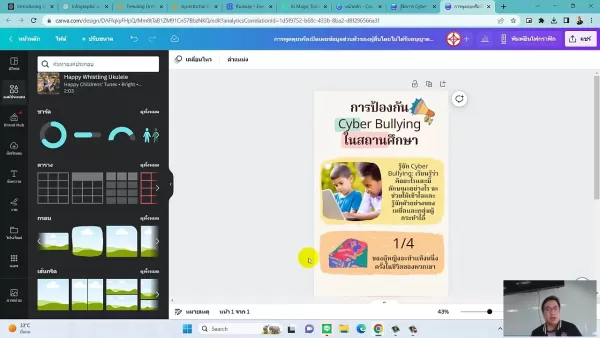LangGraph Tutorial: Build Multi-Agent AI Systems with LangChain
Welcome to the Comprehensive LangGraph Tutorial
Ready to dive into the fascinating world of multi-agent AI systems using LangChain? This tutorial is your gateway to mastering LangGraph—a powerful tool designed to simplify the development of stateful, multi-agent applications with Large Language Models (LLMs). No matter where you stand on your AI journey—whether you're an experienced developer or just starting out—you'll find actionable insights and practical knowledge here to harness LangGraph for your projects. Get ready to explore the endless possibilities of building cutting-edge AI applications with enhanced control and flexibility!
Key Takeaways About LangGraph
- Simplified Development: Streamline the creation of complex multi-agent AI systems effortlessly.
- Multi-Agent Coordination: Effortlessly orchestrate workflows involving multiple AI agents.
- Stateful Applications: Build apps that remember past interactions and adapt dynamically.
- Controllability: Gain precise control over the flow of your AI applications.
- Persistence: Ensure robustness and reliability, even when things go wrong.
- Scalability: Develop scalable solutions capable of handling large-scale interactions.
- Fault Tolerance: Keep your applications stable and reliable, even if individual agents fail.
What Exactly Is LangGraph?
LangGraph is a game-changing library for constructing stateful, multi-agent applications powered by LLMs. It excels at creating agent and multi-agent workflows while offering unique advantages like support for cycles, enhanced controllability, and persistent workflows. Unlike traditional DAG-based frameworks, LangGraph lets you design flows that involve cycles, enabling more complex and dynamic interactions among agents.

This module of LangChain proves invaluable when you need to coordinate intricate interactions between multiple AI agents. By ensuring proper management of each agent's state and maintaining reliable, persistent workflows, LangGraph transforms standalone AI components into a cohesive ecosystem.
Its architecture emphasizes key features such as cycles, controllability, and persistence. These elements are critical for modern AI development, enabling complex agent interactions, precise control over application flow, and guaranteed data integrity.
- State Management: Ensures each agent's state is accurately tracked and preserved throughout the workflow.
- Agentic Architecture: Empowers developers to craft highly customized applications tailored to specific use cases, with full control over agent logic and communication protocols.
- Cycles: Allows for iterative processes and feedback loops, setting LangGraph apart from DAG-based solutions.
- Large Language Models: Facilitate seamless interaction within multi-agent workflows, enabling the creation of advanced agent and multi-agent systems.
As mentioned earlier, LangGraph is gaining traction in enterprise settings due to its robust architecture and feature set, making it ideal for building AI solutions capable of managing massive-scale interactions and complex workflows.
Additionally, LangGraph simplifies the integration of graph knowledge into RAG (Retrieval-Augmented Generation) applications, helping structure knowledge effectively using nodes and relationships.
Why Choose LangGraph Over Other Frameworks?
LangGraph stands out among LLM frameworks thanks to its distinct capabilities and architectural design. While conventional frameworks often rely on DAGs (Directed Acyclic Graphs), which impose limitations on workflow complexity and flexibility, LangGraph supports cycles. This capability opens the door to more intricate and dynamic interactions between agents, essential for applications requiring iterative processes and feedback loops.
Here’s why LangGraph shines:
- Cycles: Enable iterative processes and feedback loops, a hallmark of complex AI workflows.
- Control: Provide enhanced control over application flow, ensuring predictable behavior.
- Persistence: Deliver robust and reliable workflows even under error-prone conditions.
- State Management: Simplify coordination between agents, maintaining consistent states across the board.
With LangGraph, you’re not limited to linear processes; instead, you gain access to tools that empower you to tackle truly complex tasks requiring multiple iterations to complete successfully.

Moreover, LangGraph introduces visualization capabilities via Langchain Cloud, allowing users to build their own agent workflows visually. Although currently optimized for Mac users, this feature promises widespread availability soon.
Getting Started With LangGraph
Agenda
- Introduction to LangGraph.
- Why LangGraph?
- Hands-on Setup and Implementation.
Affordable Learning Options
Looking to deepen your understanding? The presenter recommends checking out affordable courses priced at 399 rupees. Links are available in the video description for your convenience.
Pros and Cons of LangGraph
Advantages
- Streamlines the development of complex multi-agent AI systems.
- Offers unparalleled flexibility in crafting agent logic and communication protocols.
- Supports stateful applications with persistent workflows.
- Equips users with robust fault tolerance mechanisms to maintain application stability.
- Facilitates scalability for handling large-scale interactions.
- Integrates graph knowledge into RAG applications seamlessly.
Limitations
- The cloud version is currently optimized exclusively for Mac users, potentially restricting accessibility.
- May present challenges for beginners during initial setup and configuration, though familiarity improves over time.
Frequently Asked Questions
Q: What’s the primary advantage of using LangGraph?
A: The ability to create stateful, multi-actor applications that handle complex workflows with cycles, enhanced controllability, and persistence.
Q: Is LangGraph suited for enterprise-level applications?
A: Absolutely! LangGraph handles large-scale interactions and complex workflows, making it perfect for enterprise-level deployments. Its scalability and fault tolerance ensure robust applications.
Q: Does LangGraph support visualization?
A: Yes! Langchain Cloud introduces visual workflow building capabilities. Currently, it’s accessible only on Mac, but broader compatibility is expected shortly.
Related Questions
Q: How does LangGraph manage agent coordination in complex workflows?
A: LangGraph simplifies agent coordination by handling agent states and communication protocols efficiently. This ensures smooth collaboration among multiple agents, delegating tasks clearly and facilitating seamless execution of sophisticated multi-agent systems. For instance, different agents can work together—conducting Google searches, querying vector databases—to build a cohesive chatbot.
Related article
 Best AI Tools for Creating Educational Infographics – Design Tips & Techniques
In today's digitally-driven educational landscape, infographics have emerged as a transformative communication medium that converts complex information into visually appealing, easily understandable formats. AI technology is revolutionizing how educa
Best AI Tools for Creating Educational Infographics – Design Tips & Techniques
In today's digitally-driven educational landscape, infographics have emerged as a transformative communication medium that converts complex information into visually appealing, easily understandable formats. AI technology is revolutionizing how educa
 Topaz DeNoise AI: Best Noise Reduction Tool in 2025 – Full Guide
In the competitive world of digital photography, image clarity remains paramount. Photographers at all skill levels contend with digital noise that compromises otherwise excellent shots. Topaz DeNoise AI emerges as a cutting-edge solution, harnessing
Topaz DeNoise AI: Best Noise Reduction Tool in 2025 – Full Guide
In the competitive world of digital photography, image clarity remains paramount. Photographers at all skill levels contend with digital noise that compromises otherwise excellent shots. Topaz DeNoise AI emerges as a cutting-edge solution, harnessing
 Master Emerald Kaizo Nuzlocke: Ultimate Survival & Strategy Guide
Emerald Kaizo stands as one of the most formidable Pokémon ROM hacks ever conceived. While attempting a Nuzlocke run exponentially increases the challenge, victory remains achievable through meticulous planning and strategic execution. This definitiv
Comments (0)
0/200
Master Emerald Kaizo Nuzlocke: Ultimate Survival & Strategy Guide
Emerald Kaizo stands as one of the most formidable Pokémon ROM hacks ever conceived. While attempting a Nuzlocke run exponentially increases the challenge, victory remains achievable through meticulous planning and strategic execution. This definitiv
Comments (0)
0/200
Welcome to the Comprehensive LangGraph Tutorial
Ready to dive into the fascinating world of multi-agent AI systems using LangChain? This tutorial is your gateway to mastering LangGraph—a powerful tool designed to simplify the development of stateful, multi-agent applications with Large Language Models (LLMs). No matter where you stand on your AI journey—whether you're an experienced developer or just starting out—you'll find actionable insights and practical knowledge here to harness LangGraph for your projects. Get ready to explore the endless possibilities of building cutting-edge AI applications with enhanced control and flexibility!
Key Takeaways About LangGraph
- Simplified Development: Streamline the creation of complex multi-agent AI systems effortlessly.
- Multi-Agent Coordination: Effortlessly orchestrate workflows involving multiple AI agents.
- Stateful Applications: Build apps that remember past interactions and adapt dynamically.
- Controllability: Gain precise control over the flow of your AI applications.
- Persistence: Ensure robustness and reliability, even when things go wrong.
- Scalability: Develop scalable solutions capable of handling large-scale interactions.
- Fault Tolerance: Keep your applications stable and reliable, even if individual agents fail.
What Exactly Is LangGraph?
LangGraph is a game-changing library for constructing stateful, multi-agent applications powered by LLMs. It excels at creating agent and multi-agent workflows while offering unique advantages like support for cycles, enhanced controllability, and persistent workflows. Unlike traditional DAG-based frameworks, LangGraph lets you design flows that involve cycles, enabling more complex and dynamic interactions among agents.

This module of LangChain proves invaluable when you need to coordinate intricate interactions between multiple AI agents. By ensuring proper management of each agent's state and maintaining reliable, persistent workflows, LangGraph transforms standalone AI components into a cohesive ecosystem.
Its architecture emphasizes key features such as cycles, controllability, and persistence. These elements are critical for modern AI development, enabling complex agent interactions, precise control over application flow, and guaranteed data integrity.
- State Management: Ensures each agent's state is accurately tracked and preserved throughout the workflow.
- Agentic Architecture: Empowers developers to craft highly customized applications tailored to specific use cases, with full control over agent logic and communication protocols.
- Cycles: Allows for iterative processes and feedback loops, setting LangGraph apart from DAG-based solutions.
- Large Language Models: Facilitate seamless interaction within multi-agent workflows, enabling the creation of advanced agent and multi-agent systems.
As mentioned earlier, LangGraph is gaining traction in enterprise settings due to its robust architecture and feature set, making it ideal for building AI solutions capable of managing massive-scale interactions and complex workflows.
Additionally, LangGraph simplifies the integration of graph knowledge into RAG (Retrieval-Augmented Generation) applications, helping structure knowledge effectively using nodes and relationships.
Why Choose LangGraph Over Other Frameworks?
LangGraph stands out among LLM frameworks thanks to its distinct capabilities and architectural design. While conventional frameworks often rely on DAGs (Directed Acyclic Graphs), which impose limitations on workflow complexity and flexibility, LangGraph supports cycles. This capability opens the door to more intricate and dynamic interactions between agents, essential for applications requiring iterative processes and feedback loops.
Here’s why LangGraph shines:
- Cycles: Enable iterative processes and feedback loops, a hallmark of complex AI workflows.
- Control: Provide enhanced control over application flow, ensuring predictable behavior.
- Persistence: Deliver robust and reliable workflows even under error-prone conditions.
- State Management: Simplify coordination between agents, maintaining consistent states across the board.
With LangGraph, you’re not limited to linear processes; instead, you gain access to tools that empower you to tackle truly complex tasks requiring multiple iterations to complete successfully.

Moreover, LangGraph introduces visualization capabilities via Langchain Cloud, allowing users to build their own agent workflows visually. Although currently optimized for Mac users, this feature promises widespread availability soon.
Getting Started With LangGraph
Agenda
- Introduction to LangGraph.
- Why LangGraph?
- Hands-on Setup and Implementation.
Affordable Learning Options
Looking to deepen your understanding? The presenter recommends checking out affordable courses priced at 399 rupees. Links are available in the video description for your convenience.
Pros and Cons of LangGraph
Advantages
- Streamlines the development of complex multi-agent AI systems.
- Offers unparalleled flexibility in crafting agent logic and communication protocols.
- Supports stateful applications with persistent workflows.
- Equips users with robust fault tolerance mechanisms to maintain application stability.
- Facilitates scalability for handling large-scale interactions.
- Integrates graph knowledge into RAG applications seamlessly.
Limitations
- The cloud version is currently optimized exclusively for Mac users, potentially restricting accessibility.
- May present challenges for beginners during initial setup and configuration, though familiarity improves over time.
Frequently Asked Questions
Q: What’s the primary advantage of using LangGraph?
A: The ability to create stateful, multi-actor applications that handle complex workflows with cycles, enhanced controllability, and persistence.
Q: Is LangGraph suited for enterprise-level applications?
A: Absolutely! LangGraph handles large-scale interactions and complex workflows, making it perfect for enterprise-level deployments. Its scalability and fault tolerance ensure robust applications.
Q: Does LangGraph support visualization?
A: Yes! Langchain Cloud introduces visual workflow building capabilities. Currently, it’s accessible only on Mac, but broader compatibility is expected shortly.
Related Questions
Q: How does LangGraph manage agent coordination in complex workflows?
A: LangGraph simplifies agent coordination by handling agent states and communication protocols efficiently. This ensures smooth collaboration among multiple agents, delegating tasks clearly and facilitating seamless execution of sophisticated multi-agent systems. For instance, different agents can work together—conducting Google searches, querying vector databases—to build a cohesive chatbot.
 Best AI Tools for Creating Educational Infographics – Design Tips & Techniques
In today's digitally-driven educational landscape, infographics have emerged as a transformative communication medium that converts complex information into visually appealing, easily understandable formats. AI technology is revolutionizing how educa
Best AI Tools for Creating Educational Infographics – Design Tips & Techniques
In today's digitally-driven educational landscape, infographics have emerged as a transformative communication medium that converts complex information into visually appealing, easily understandable formats. AI technology is revolutionizing how educa
 Topaz DeNoise AI: Best Noise Reduction Tool in 2025 – Full Guide
In the competitive world of digital photography, image clarity remains paramount. Photographers at all skill levels contend with digital noise that compromises otherwise excellent shots. Topaz DeNoise AI emerges as a cutting-edge solution, harnessing
Topaz DeNoise AI: Best Noise Reduction Tool in 2025 – Full Guide
In the competitive world of digital photography, image clarity remains paramount. Photographers at all skill levels contend with digital noise that compromises otherwise excellent shots. Topaz DeNoise AI emerges as a cutting-edge solution, harnessing
 Master Emerald Kaizo Nuzlocke: Ultimate Survival & Strategy Guide
Emerald Kaizo stands as one of the most formidable Pokémon ROM hacks ever conceived. While attempting a Nuzlocke run exponentially increases the challenge, victory remains achievable through meticulous planning and strategic execution. This definitiv
Master Emerald Kaizo Nuzlocke: Ultimate Survival & Strategy Guide
Emerald Kaizo stands as one of the most formidable Pokémon ROM hacks ever conceived. While attempting a Nuzlocke run exponentially increases the challenge, victory remains achievable through meticulous planning and strategic execution. This definitiv





























